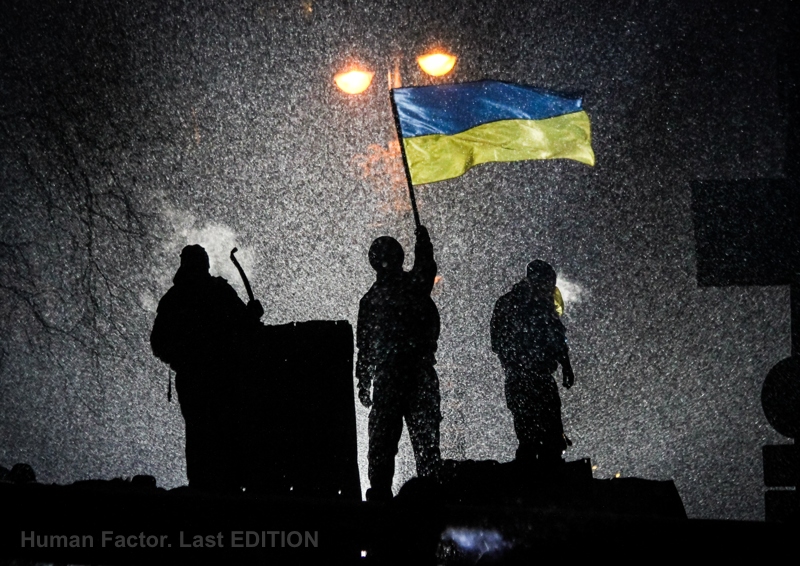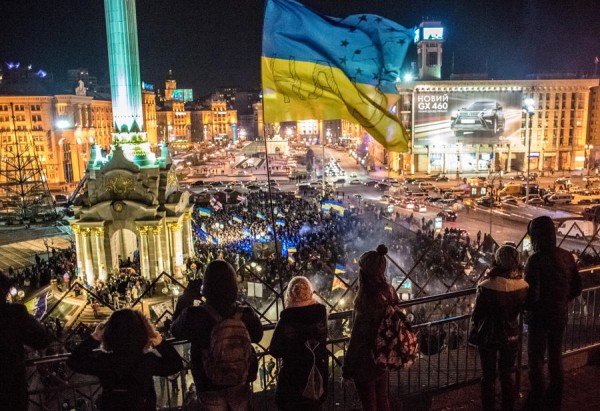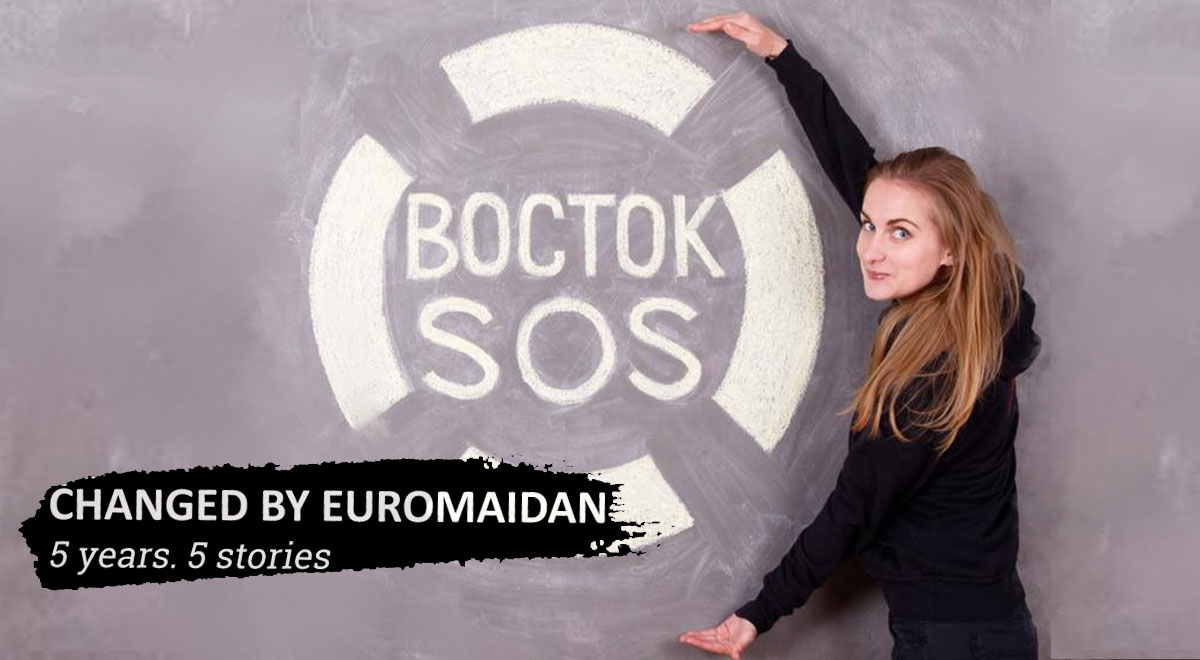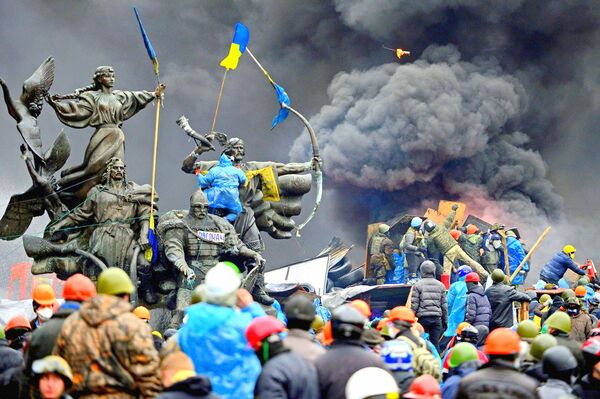Six years ago, in the culmination of three months of Euromaidan protests, Ukrainian riot police shot dead several dozen men in the broad daylight of central Kyiv. This most resonant crime of modern Ukraine is still unsolved. However, a key ex-prosecutor has shared what Ukraine knows about the bloodiest days of Euromaidan, shedding new light on the ammunition used, and purpose for the crackdown.
Read also:
“They are all grouped by their organizers... Talking about the detected crimes last year, the Prosecutor General meant exactly the case of the suspected ex-president, the chief of the Interior Ministry and his deputy, the head of the Security Service of Ukraine and his deputy - namely, those indicted for most crimes,” Horbatiuk highlighted.He adds that completing the cases is virtually impossible due to legislation issues, namely - regulations on trials in absentia. The corresponding legislation expired in November 2018. Both previous and current parliaments did not pass a new law. Talking about other perpetrators of crimes against the Euromaidan protesters, Horbatiuk says that the ratio of imposed sentences to the overall number of the cases directed to courts is too low. Only 56 verdicts were delivered, he said. The ex-head of the Special Investigations’ Department shed light on the course of the events of 18-20 February 2014 as re-constructed by the investigators,
“On 18 February, the Euromaidan protesters scheduled a march to the Verkhovna Rada [Parliament] demanding to reduce presidential powers. The government knew about it and prepared. As the investigation established, the dispersal of the march in the morning [of 18 February] was related to the further announcement of the anti-terrorist operation [in central Kyiv] and the Maidan dispersal [attempt] overnight into 19 February.”Horbatiuk states that the government's intention was to use clashes between the protesters and the law enforcement forces as a formal reason for announcing an anti-terrorist operation,
“However, the investigation found that there was not a single legal reason for that.”The law enforcement officers, he sets forth, received hunting ammunition, which is not envisaged by any law.
“They could have used it in pump-action rifles that were to be used, according to the permitting instructions, with rubber bullets,” said Horbatiuk and added that the first slain protesters were killed with buckshot.The investigators collected the evidence against the Kharkiv unit of the Berkut root police. They were charged with killing three people and injuring at least 30 that morning. They were informed that charges were pressed against them and arrested. Nevertheless, further on district courts and the Kyiv Court of Appeal found the grounds to mitigate their pre-trial restrictions by canceling their remand in custody that allowed the suspects to escape to Russia after they left the detention facilities. Horbatiuk also stresses that the first injury of a law enforcer occurred after 14:00 or about four hours into the confrontation, which may prove that the actions of the protesters were of defensive nature. And the first operatives were killed late in the evening. In total, 13 law enforcers died in the deadly clashes of 18-20 February in Kyiv. Out of them, four during the dispersal of the peaceful march, five during the night assault, and four on 20 February. According to the investigation, those who gave orders to special units later fled to Russia and now can be tried only in absentia. At 18:00 on 18 February, the authorities delivered an ultimatum to the protesters urging them to stop confrontation and threatening to launch an “anti-terrorist operation” against the protesters. Eventually, they did start it at 19:00.
“There was not a single criminal proceeding opened on terrorism charges which could at least formally give a sign [that an anti-terrorist operation could be considered]. Nevertheless, the anti-terrorist operation took place overnight into 19 February. 17 protesters and five law enforcement officers died,” says Horbatiuk.13 protesters got killed at the barricades, two burned alive in the Trade Union building. And journalist Viacheslav Veremiy with another person were killed on one of the central streets. As told by Horbatiuk, the law enforcers additionally initiated giving away firearms to the so-called titushkas or thugs working for the police. The plan was to force the protesters out from Maidan, the central square of Kyiv where the protesters' camp was located, to the higher-located Mykhailivska Ploshcha. And to prevent the Maidan movement from gathering at Mykhailivska, the titushkas kept watch there. The thugs killed two and injured eight more people.
“These persons [titushkas] were arrested for two years and later a court released them. The proceedings are ongoing, and it’s unknown when they come to an end,” he said.Later there was a lull, and overnight into 20 February, only separate clashes took place. Starting from 7:30 in the morning, shots occurred from the direction of the Maidan. According to Horbatiuk, two people were charged as three law enforcement officers were killed.
“Senior executives took advantage of the situation, according to the suspicion notes - because it’s not yet identified and there are no verdicts, to deploy an armed unit of riot police in the Instytutska Street and to engage firearms,” the investigator explains.Horbatiuk clarifies that the incident rather served as a formal cause to unleash the bloodshed because the law enforcers did not make any attempts to catch those who had shot at them. Instead, the operatives indiscriminately opened fire on the protesters who were going up vul. Instytutska,
“On 20 February, out of the 48 instances of murder and 80 instances of gunshot wounds [among the protesters], not a single case was identified in which a victim had carried weapons in their arms or something similar to firearms.”As Horbatiuk further puts it, all of the protesters who were injured with weapons in their hands did not pose a threat to the law enforcement representatives at the moment. Therefore, the use of firearms by special units had signs of intimidation which, according to the Criminal Code, is a sign of terrorism itself. Even the death toll of 20 February did not stop the government.
“In order to arm the law enforcers, several thousands of pieces of firearms were given away to them overnight into 21 February. These were the Kalashnikov assault rifles,” stresses Horbatiuk.The ex-head of the Special Investigations’ Department, says that 408 rifles and 90 thousand rounds for them were additionally given to the titushkas. The leadership intended to continue fighting. But things didn’t go their way as President Yanukovych fled the country and Ukraine entered its post-Revolution era. The investigation into the massacre started on 23 February 2014. By the end of the same year, the Special Department was established.
Read more:
- Two Maidan massacre defendants return to Kyiv to prove in court Russian propaganda's coup narrative
- Maidan massacre probe to face even more threats in 2020
- Ukraine's public prosecution reform leaves Maidan massacre in limbo
- Ukraine swaps 127 prisoners including defendants of Maidan killings to 55 Ukrainians held in Russia
- 5 years after, probe into Euromaidan killings still not finished
- Case of Euromaidan massacre may never be solved as Berkut suspects freed for prisoner exchange with Russia





